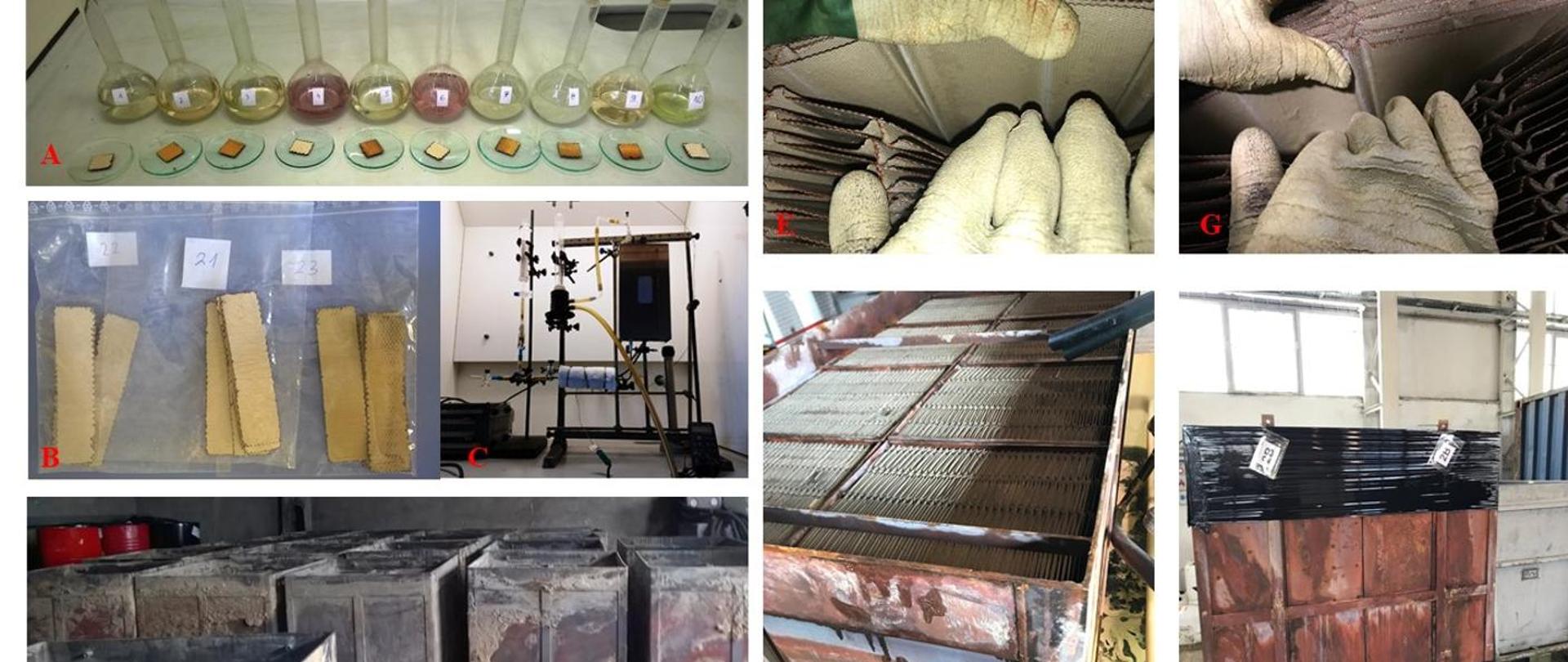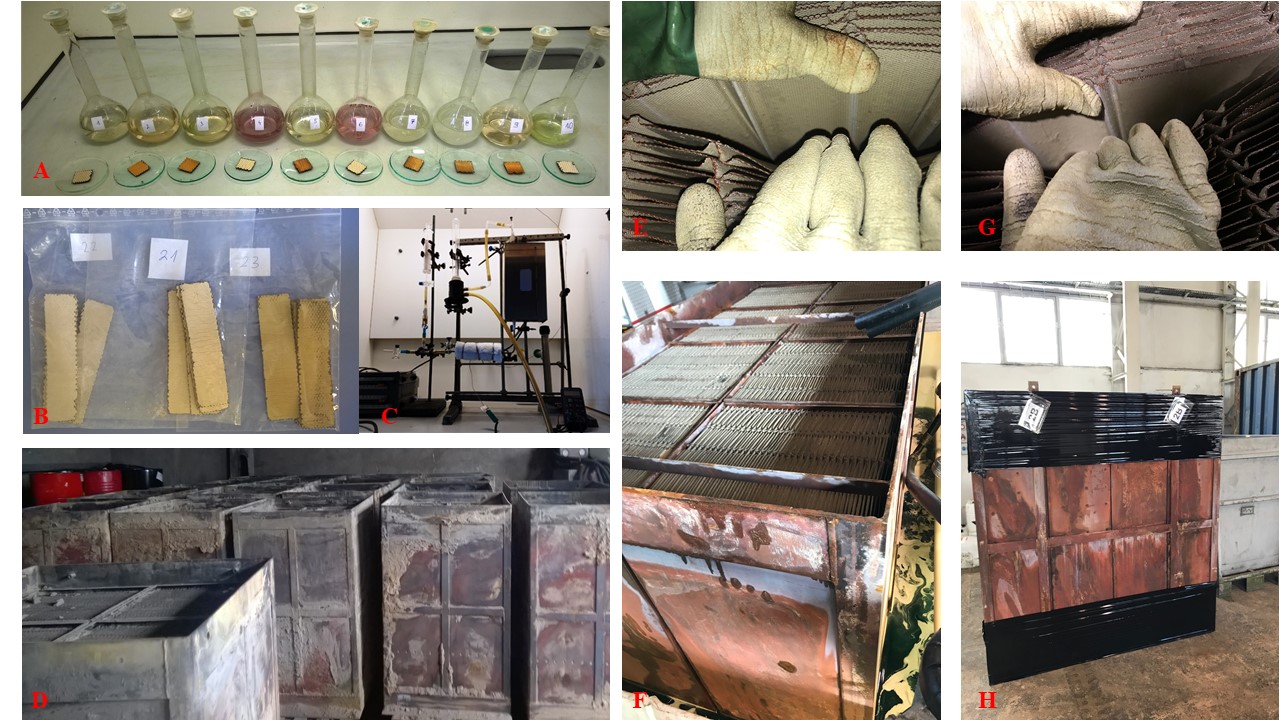Development of a method for regeneration of DeNOx catalysts
The solution was developed for industrial plants with boilers of more than 50 MW total rated thermal input

 Project title
Project title
Development of a method for regeneration of DeNOx catalysts used in energy installations and development of new, more efficient DeNOx catalysts based on innovative nanotechnology derived materials.
 Name of Beneficiary/Beneficiaries
Name of Beneficiary/Beneficiaries
- The University of Silesia in Katowice
- Ad Moto Rafał Zawisz
 Name of programme
Name of programme
Joint Undertaking of the National Centre for Research and Development and "Tango" National Science Centre
 Competition
Competition
TANGO1
 Project value
Project value
PLN 1,426,471
 Funding value
Funding value
PLN 1,250,000
 Project delivery period
Project delivery period
from 01 July 2015 to 31 May 2019
Meet our team

View the results of our work

What problem is addressed by the project?
The solution was developed for industrial plants with boilers of more than 50 MW total rated thermal input. The results of the project were submitted for protection to the Polish, Slovak and Czech Patent Offices. In 2020, the authors of the invention were granted a patent by the Patent Office of the Republic of Poland (P.428501) for a method of regenerating industrial SCR catalysts. The developed invention has solved a number of problems in the industrial cleaning of SCR catalysts. The main benefit for the companies interested in the product resulting from the application of the developed SCR catalyst cleaning technology is the reduction of the onerous effect of chemicals on the catalytic mass fixing elements (steel grids). The use of an appropriate chemical composition reduces corrosion and allows the catalyst pores to be properly cleaned of CaSO4 deposits formed during catalyst use. The restoration of the porous surface on the catalytic mass surface is crucial for the proper functioning of the catalyst in the NOx reduction process. In addition, the chemical composition reduces catalyst mass erosion and allows for potentially longer catalyst life.
Furthermore, the developed method of applying the chemical composition allows omitting the supplementation of the catalyst surface with tungsten and vanadium or molybdenum salts during the first catalyst purification. The invention contributes to reducing the excessive use of chemicals in the regeneration process while reducing process costs. The pro-ecological character of the solution is also expressed by the method of management of waste produced during the regeneration of catalysts. It consists of removing hazardous waste (including As, Tl, small amounts of V, W, Mo and trace elements Cu, Ni, Zr, Zn, Nb) to biologically inactive sulphides or metal hydroxides. Hydrometallurgical methods can recover the most valuable elements.
Who uses the project results?
By using proprietary solutions, the invention allows for a significant improvement in the safety of catalyst regeneration on an industrial scale. Extending the life of SCR catalytic converters reduces the anthropogenic footprint of SOx, COx, VOCs and NOx in the air and reduces the need to scrap used catalytic converters that are hazardous material. The main benefit to society resulting directly from the implementation of the solution is improved air quality. Reducing catalyst operating costs will result in increased investment in deNOx catalyst technology, translating globally into improved air quality in Poland. The tangible benefit for society is the reduction of smog. At the same time, for a recipient, it means the reduction of costs for applying catalytic converters in the industry while complying with NOx emission standards and the protection against penalties associated with non-compliance with the EU environmental directive 2010/75/EU.
What was the greatest challenge during project implementation?
Innovation is a major scientific and organisational challenge. Above all, however, the determinant of an innovation's success is its market success. The new method for revitalising DeNOx catalysts is no exception in this respect. In addition to developing a good process engineering solution, it was necessary to bring the solution to a market dominated by existing players. The above required a strategy to demonstrate the effectiveness of the solutions developed and to gain the ability to win tenders dominated by existing players trying to monopolise this market.
Our advice for other applicants
In Poland, innovation still plays a marginal role, and our economy ranks low in the EU in terms of innovation. It is often thought that innovation can generate billions of euros for the university in the university field. In this context, it is worth analysing how innovation is perceived in the US, one of the world's most innovative economies. Stanford University is a case in point here. Revenue from technology transfer is only a small fraction of the budget here. Innovation - this is the mission of a university generously funded by state and private grants. Supporting society with knowledge and new technologies is an important task of universities. The income generated in the process is important but not crucial. Only a few of the patents generate more income for the university. Polish universities are often too poor for such a strategy. The success of an innovation created in cooperation between university and business must take into account the fact that, in most cases, it is business that bears the financial risk. Risk also determines the distribution of fruits. Let us not demand too much from business. Too high a financial demand, over and above one's risk contribution, will kill any innovation. Unfortunately, such an image is rare in Poland.